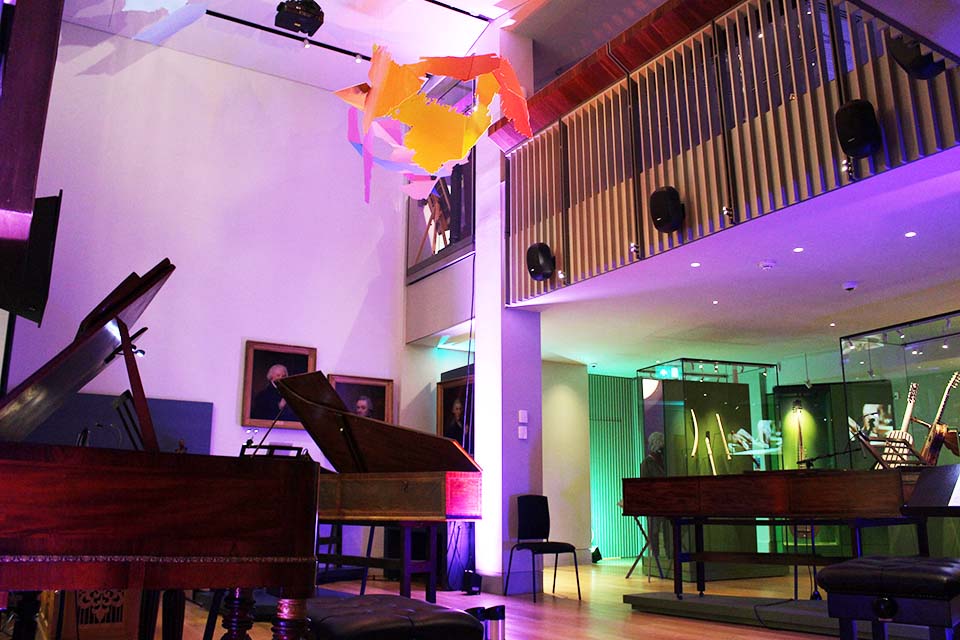Museum blog: Bringing the RCM Museum to life with 'Art(efacts) of Music'
Friday 27 May 2022
Since the Royal College of Music (RCM) Museum reopened in October 2021, students from the Composition Faculty have been taking inspiration from the 500 years of musical history represented in its collections.
The instruments housed in the Museum were made to be played and the spaces they inhabit were designed to be filled with sound. In recent months, students involved in Great Exhibitionists, a cutting-edge and student-led project at the RCM, have devised their own experimental, multi-media events inspired by the Museum’s collections.
Here, Anian Wiedner, a third-year student on the BMus programme reflects on how to bring a museum to life.
When the RCM Museum reopened its doors last autumn, the film ‘Night at the Museum’ came to my mind, and I couldn’t help imagining the Museum and its exhibits coming to life.
I was excited by the idea of using the space and instruments in some sort of innovative performance that would really showcase what the Museum has to offer. From here, the concept for Art(efacts) of Music was born. The RCM’s Great Exhibitionist series and its focus on presenting innovative performances seemed the perfect platform to share my idea.
How do you bring a museum to life?
I knew what I wanted my performance to do. Working out how to achieve it was another matter and would be the biggest challenge throughout the composition phase. Over the following five months I grappled with several possible answers to the question of how to bring a museum to life. Some ideas I discarded immediately such as using modern instruments and simply making use of the space. Other ideas I was convinced of for weeks only to realise that they could distract from the Museum and its collections. Once I disregarded having dancers and actors involved for dramatic effect, three key components remained:
- Instrumentalists improvising on playable instruments in the Museum collection (a harpsichord, a spinet, a clavichord, a square piano, a pianoforte and three viola da gambas).
- Singers performing a short four-part vocal piece from various positions within the Museum to showcase its special acoustic. During the performance, all four singers walked around independently, periodically singing set melodic phrases to the word ‘music.’ This created a unique spatial and sonic experience with the sound constantly moving.
- An atmospheric electronic track playing through the speaker system which was created by manipulating recordings I made in the Museum.
[gallery]
These three components came together as a four-hour live sound installation. Members of the audience were free to walk around and come and go whenever they wanted. Some people were only there for a couple of minutes, while others stayed for multiple hours, which was exactly how the project was intended to work.
The days leading up to a performance always bring heart-racing moments with final changes and fine tuning. These pre-show nerves were amplified for this four-hour performance. Working out how to synchronise the performers without a complete dress rehearsal was a huge challenge and I had no idea what to expect when I arrived on the morning of the performance. Fortunately, everything ran smoothly, and I received incredibly positive feedback from audience members and performers alike.
This project brought many firsts for me including my first ever sound installation. Before this, I had never composed using electronics, or written for viola da gambas, or tried to write a piece which lasted four hours! Combining sounds from the past with those of the future allowed me to bring the Museum to life. It was an amazing experience which would not have been possible without this collaboration between the Museum and the Composition Faculty.
Anian Wiedner
Bachelor Of Music (Hons) Year 3
More information about about studying Composition at the Royal College of Music can be found here.








